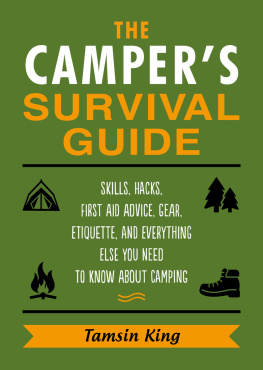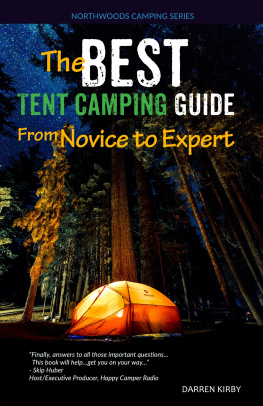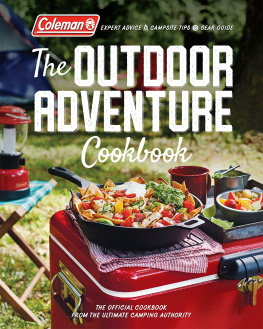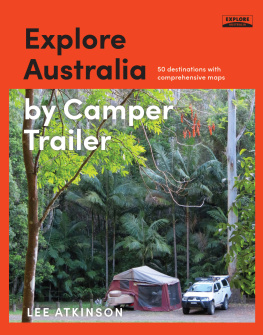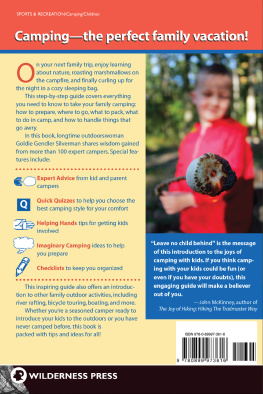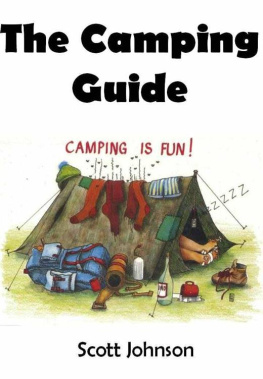S is for Smores
A Camping Alphabet
Next to picnics and fireworks, nothing else says summertime fun as much as the family camping trip. From what to pack, where to go, and what to do when you get there, S is for Smores: A Camping Alphabet takes readers on an A-Z trail exploring this outdoor pastime.
Veteran camper Helen Foster James tackles topics such as unique camping environments, equipment necessities, famous conservationists, and national parks and other attractions.
With the alphabet as a backdrop, beginning readers enjoy simple rhymes while older children discover facts about each letter topic in the accompanying sidebar expository.
G is for the Gear youll need
to organize and pack
to keep your camping lots of fun
and bring you safely back.
Whether your idea of roughing it is a blanket in your own backyard or the subarctic ecosystem of Alaskas Denali National Park, S is for Smores is a fun and informative guide that is sure to help campers of all ages make the most of their wilderness adventures.
S is for Smores
A Camping Alphabet

Written by Helen Foster James and Illustrated by Lita Judge
A backpack full of thanks to
Sleeping Bear Press and my husband Bob.
For My Camping Buddies
Happy Trails to You.
HELEN

To the wildlife who share their homes
with us when we camp.
LITA
A
Campers enjoy the outdoors from a desert floor to a mountain peak or by a lake. They hike, fish, climb rocks, watch wild animals, examine wildflowers, listen for birds, canoe, kayak, and more. Home for the night might be a tent, trailer, or motor home.
Camping became more popular when cars became affordable. Campers packed their cars full of gear and headed for adventure. They drove to places they couldnt visit when they used trains or steamships for transportation.
Roads were primitive in the early 1900s, but campers liked roughing it. Soon everyone liked camping. Automaker Henry Ford, inventor Thomas Edison, tire manufacturer Harvey Firestone, and President Warren Harding went on a camping trip together in the Blue Ridge Mountains in 1921.
Before camping, its important to learn how to respect nature, keep safe, and have fun with family and friends. Read on to learn how to be a happy camper.
A is for Adventure. Lets camp from A to Z. On mountains and deserts or beaches, if you want to have fun, follow me!

B
Beach camps can be near an ocean, river, or lake. The gear that campers take depends on their water activities. Campers who fish, for example, take fishing poles, line, and bait. Every boater must keep safe by taking and wearing a life jacket or PFD (Personal Flotation Device).
Canoeists paddle their canoe to see scenery and get exercise. Some paddle from one campsite to another each day or even from one lake to another with their gear tucked safely in their canoe.
Minnesotas Voyageurs National Park was named for French-Canadian trappers who traveled long ago in birch bark canoes. Today its lakes and bays are favorite canoeing and kayaking areas.
At Californias Channel Islands National Park campers arrive in boats. Permits and reservations are needed to camp at these primitive campsites. Snorkelers pack swim-suit, fins, mask, and snorkel in gear bags for camping on nearby privately owned Catalina Island.
Lake Mead is one of the worlds largest artificially created lakes and a favorite boating, fishing, and swimming area. Its located on the Arizona-Nevada border.
B is for our Beach camp with the waters edge nearby. We paddle, swim, and fish beneath a bright blue sky.

C
Arizonas Grand Canyon National Park is one of the worlds most amazing canyons. The Colorado River helped carve this giant chasm. Its nearly a mile deep in some places. There are many hiking trails in the park. Some visitors ride a mule to the bottom to camp. Others raft through the canyon on the Colorado River and camp by the rivers edge. The Grand Canyon is a World Heritage Site.
Utahs Bryce Canyon National Park and Zion National Park are two other well-known canyon areas. They are famous for their beauty and amazing geological formations. There are many canyons with trails and sights to explore in campgrounds in almost every state and around the world.
Boots are an important piece of gear for hiking up and down canyons. Sneakers are fine for some camping trips, but for more strenuous hikes it is important to wear boots that give ankle support and have soles that grip rocks. Hikers need to save energy to hike back up a canyon after theyve hiked down.
C is for the Canyons and few are as great as the Grand. Slowly carved by natures knives of water, wind, and sand.

D
The desert is a fascinating camping environment. Campers must look carefully to notice the variety of flowers and animals that live in the desert. Different animals and plants live in specific desert areas and have adaptations. Some desert animals, for example, are nocturnal and are awake in the evening to hunt for food when its cooler.
Deserts can be extremely hot in the summer, making them favorite camping areas in winter and spring. In spring, desert floors burst with a carpet of colorful wildflowers and blooming cacti when there is a perfect combination of rain and timing. Flowers may be as small as a pinhead or large like the ocotillos (ah-ko-TEE-oh) bright red flowers.
Arroyos are sandy river washes that may look like a comfortable tent spot, but they can flood quickly during a thunderstorm. So always avoid camping in low areas where water can collect.
Some desert campsites have drinkable water, but if not, be sure to take at least one gallon of water per person per day, and drink it to avoid becoming dehydrated. Juice and soda may seem thirst quenching, but water is essential.
Desert campers need light colored clothing to keep cool during the day and layers of clothing to put on for nippy nights. Desert campers always pack sunscreen, sunglasses, and a wide brim hat for sun protection.
Death Valley National Park is the driest, hot -test, and lowest location in North America.
Joshua Tree National Park is where the unusual looking Joshua trees grow. They grow slowly but can live more than 200 years. They look like they have oddly shaped, outstretched arms.
Many desert areas are protected to preserve their fragile environment, but other areas are set aside for recreational fun with dune buggies and other off-road vehicles.
D is for the Desert. Look carefully and see the many plants and animals that live here wild and free.

E
Here are ten essentials campers must pack to keep safe and be prepared in an emergency.



